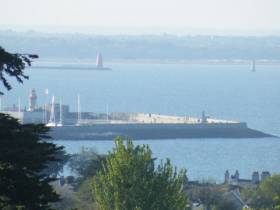Displaying items by tag: Spring into Heritage
Launch of DLR Spring into Heritage Programme of Events
#DLRHeritage - Easter is over but there’s plenty more to do with this year’s Spring into Heritage (28 April-18 June) programme organised by Dun Laoghaire-Rathdown County Council.
Beginning next Monday, the DLR Heritage programme offers a variety of events and free guided walking tours. Among them are those with direct maritime themes connected with Dun Laoghaire Harbour which this year celebrates its Bicentenary.
Given this special 200th anniversary, guided walking tours will prove to be particularly apt as they delve into the magnificent engineering of the historic harbour built using granite from nearby Dalkey. The harbour originally began with construction in 1817 of a single pier, the East Pier.
Nearby to the popular East Pier, there will be also be guided tours of the National Maritime Museum housed in the former Mariners Church located next to the DLR Lexicon Library.
On the other side of the harbour, just beyond the West Pier, there will also be tours of Seapoint Martello Tower built to defend a possible Napoleonic invasion. The stone-cut structure affords a wonderful panorama with views sweeping across Dublin Bay.
Why not take a visit to the Dalkey Castle & Heritage Centre. Tours explore and explain the 15th century medieval fortified towerhouse, where cargoes were once stored from ships that anchored in Dalkey Sound which then acted as the main port for Dublin.
Other none coastal venues including tours of historic houses set in parkland throughout the borough are available. Noting some events require pre-booking. For more details including downloadable leaflet click here.





























































